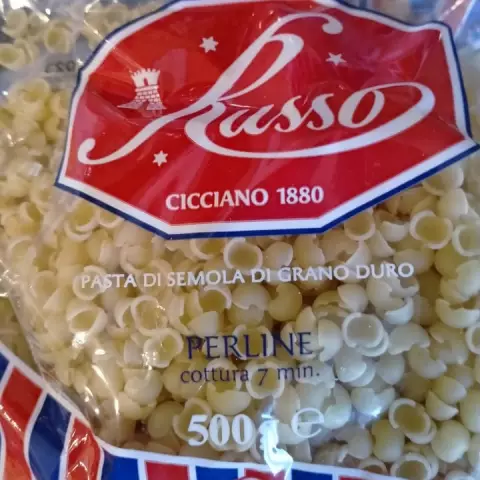- Author Rachel Wainwright [email protected].
- Public 2023-12-15 07:39.
- Last modified 2025-11-02 20:14.
Safocid
Instructions for use:
- 1. Composition of the preparation
- 2. Active ingredients
- 3. Indications for appointment
- 4. Contraindications
- 5. Use with care
- 6. Side effects
- 7. Special instructions
- 8. Overdose
- 9. Conditions and shelf life
Composition of the preparation

Safocid is a preparation containing a combination of three active dosage forms in the form of separate tablets. At the moment, Safocid has no structural analogs. According to the instructions of Safocid, the drug contains the following active ingredients:
- Fluconazole. 1 tablet containing the active ingredient fluconazole - 150 mg, excipients: dibasic calcium phosphate (anhydrous), croscarmellose sodium, magnesium stearate, colloidal silicon dioxide, “crimson varnish 4R” dye;
- Azithromycin. 1 coated tablet containing the active ingredient azithromycin (in the form of a dihydrate) 1 g. Auxiliary components: sodium lauryl sulfate, sodium croscarmellose, colloidal silicon dioxide (anhydrous), povidone K30, magnesium stearate. Sheath: hypromellose, diethyl phthalate, purified magnesium hydrosilicate (talc), titanium dioxide, macrogol 4000, 4R crimson varnish;
- Secnidazole. 2 coated tablets containing 1 g of the active ingredient secnidazole. Auxiliary components: corn starch, MCC, colloidal silicon dioxide (anhydrous), purified talc, sodium starch glycolate, povidone 30, magnesium stearate. Shell: hydroxypropyl methylcellulose, diethyl phthalate, purified talc, titanium dioxide, macrogol 4000.
As an analogue of Safocid, it is advisable to purchase separately all active ingredients: azithromycin, secnidazole and fluconazole.
Active ingredients of Safotsid
The medicinal substances contained in the drug Safocid belong to different pharmacological groups.
Fluconazole is an antifungal drug. Inhibits the synthesis of sterols in the fungal cell. It is used to treat opportunistic fungal infections caused by Cryptococcus neoformans, Candida spp., Trichophyton spp., Microsporum spp.. Also used to treat highly contagious mycoses.
Azithromycin is a broad-spectrum antibiotic. Macrolide group. Prone to accumulation in the focus of inflammation. It is active against many gram-positive cocci, a number of gram-negative bacteria, and some anaerobic pathogens. An important property is activity against Mycoplasma pneumoniae, Chlamydia trachomatis, Ureaplasma urealyticum, Borrelia burgdoferi.
Secnidazole is a bactericidal antimicrobial drug. It is active against obligate anaerobic bacteria, causative agents of a number of protozoal infections.
Indications for the appointment of Safotsid
The use of Safocid is possible for the treatment of combined infections of the genitourinary tract, sexually transmitted infections: gonorrhea, trichomoniasis, chlamydia, bacterial vaginosis, fungal infections. Like analogues, Safotsid can also be used to treat concomitant specific and nonspecific cystitis, urethritis, vulvovaginitis, cervicitis.
Contraindications
- hypersensitivity to the active ingredients of Safocid, as well as to any drug of their pharmacological groups;
- the use of Safocid is contraindicated in conjunction with astemizole, terfenadine or other drugs that can prolong the QT interval;
- pregnancy;
- lactation;
- childhood;
- organic diseases of the central nervous system.
Use of Safocid with caution
According to the instructions, the use of Safocid with caution is possible while taking it with rifabutin, cisapride or other drugs metabolized by the cytochrome P450 system.
Side effects of Safocid
- From the liver and gastrointestinal tract: digestive disorders, nausea, vomiting, diarrhea, flatulence, abdominal pain, lack of appetite;
- From the hematopoietic system: leukopenia;
- From the side of the cardiovascular system: very rarely there may be cardiac arrhythmias;
- Allergic reactions like urticaria, anaphylactic reactions;
- From the senses: rarely taste disturbances.
According to the instructions and reviews about Safocide, other side effects are very rare: stomatitis, headache, dizziness.
special instructions
When using simultaneously fluconazole (Safocid) and oral antihyperglycemic drugs, careful glycemic control is required, because fluconazole may lower blood sugar levels.
According to the instructions of Safocid, the joint administration of fluconazole and high doses of theophylline can lead to an overdose of the latter, because fluconazole inhibits theophylline excretion.
With the simultaneous administration of azithromycin (Safocid) and warfarin, prothrombin time control is necessary.
When using Safocid and antacids, an insufficient positive effect may be observed, because antacids slow down the absorption of azithromycin.
According to Safocid's instructions, the simultaneous use of azithromycin with dihydroergotamine or ergotamine enhances their toxic effect (manifested by vasospasm, dysesthesia).

Azithromycin (Safocid) can increase the plasma concentration and, as a result, increases the toxicity of cycloserine, indirect anticoagulants, felodipine, methylprednisolone, as well as drugs whose metabolism in the body occurs with the participation of microsomal oxidation (carbamazepine, cyclosporine, terfenadine, valeparbitalic acid, ergot alkaloids, disopyramide, phenytoin, bromocriptine, oral hypoglycemic agents, theophylline and other xanthines). This is due to the inhibition of the process of microsomal oxidation in liver cells by azithromycin.
According to the instructions, Safocid, when taken simultaneously with ethanol, can cause abdominal cramps, nausea, vomiting, flushing, headache (due to a disulfiram-like reaction with secnidazole).
Overdose
There is no data on overdose in the instructions and on the reviews about Safocide.
Conditions and shelf life of Safotsid
Keep out of reach of children, protected from light, dry place. Storage temperature no more than 30 ° C.
Expiration date: 3 years.
Information about the drug is generalized, provided for informational purposes only and does not replace the official instructions. Self-medication is hazardous to health!






